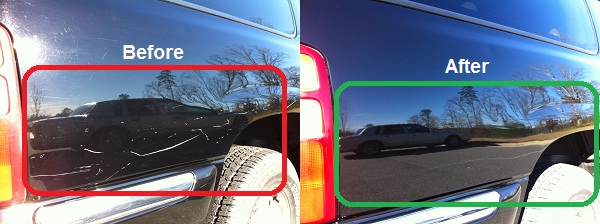WHAT IS WET SANDING?
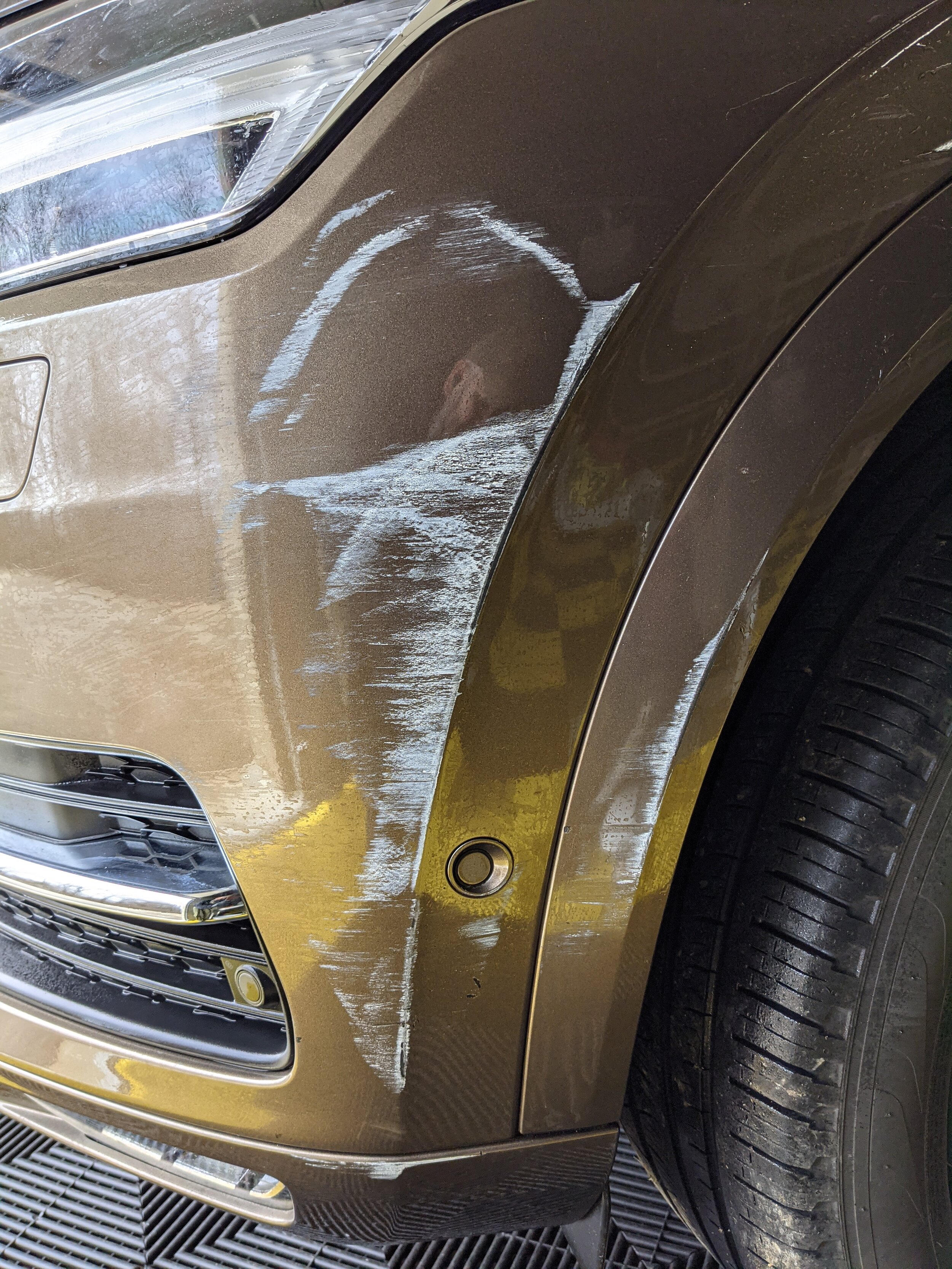
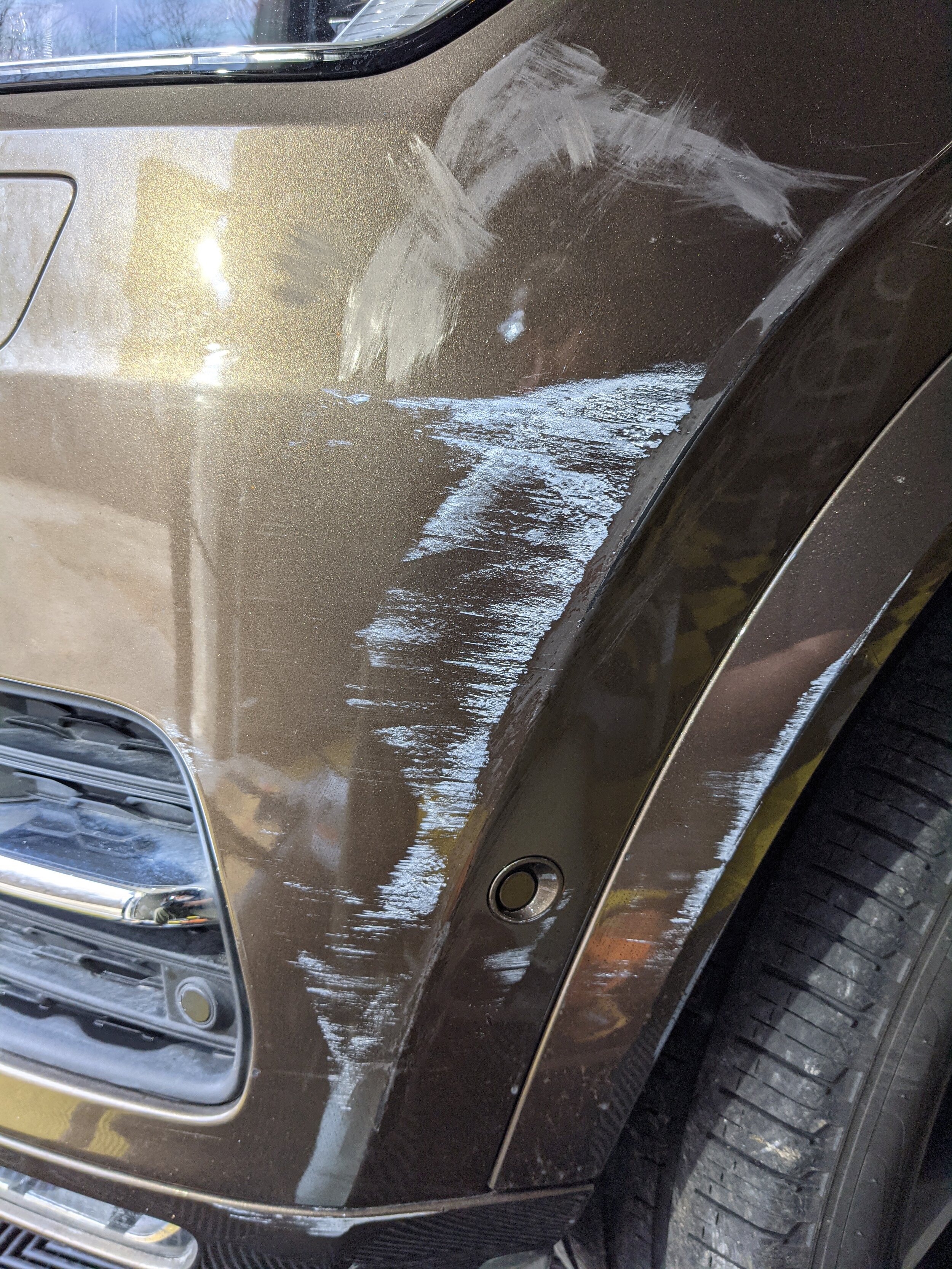
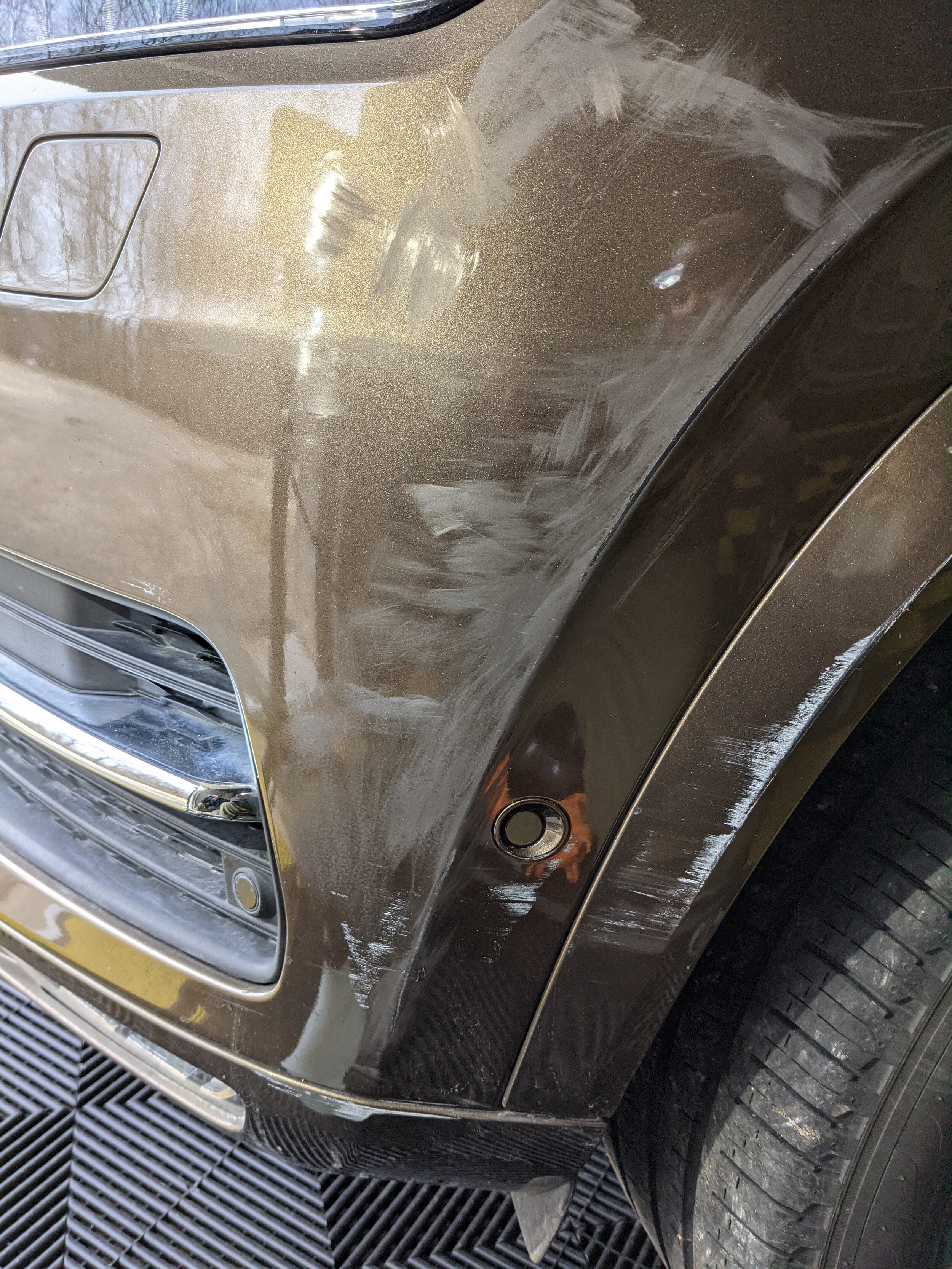

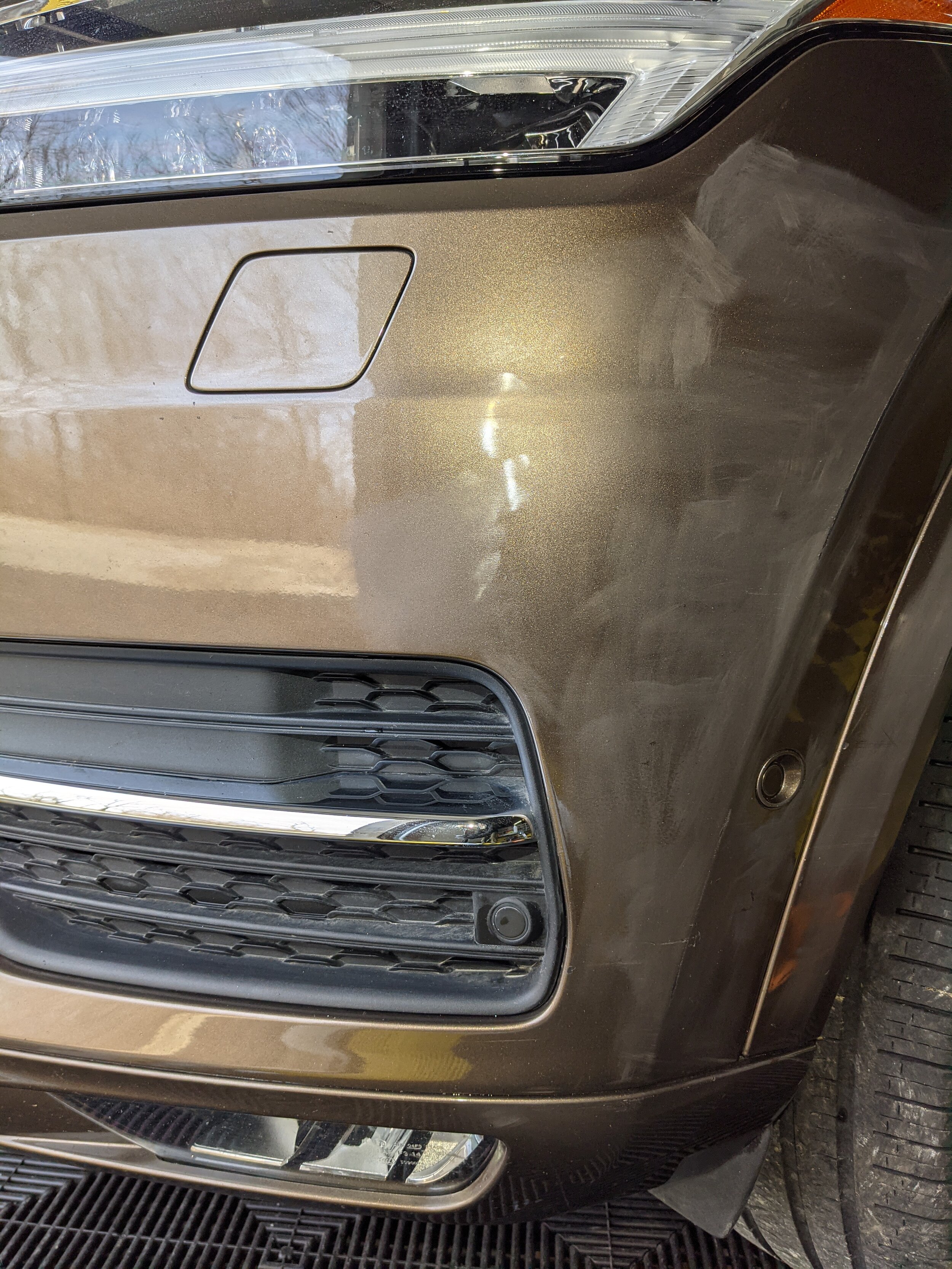
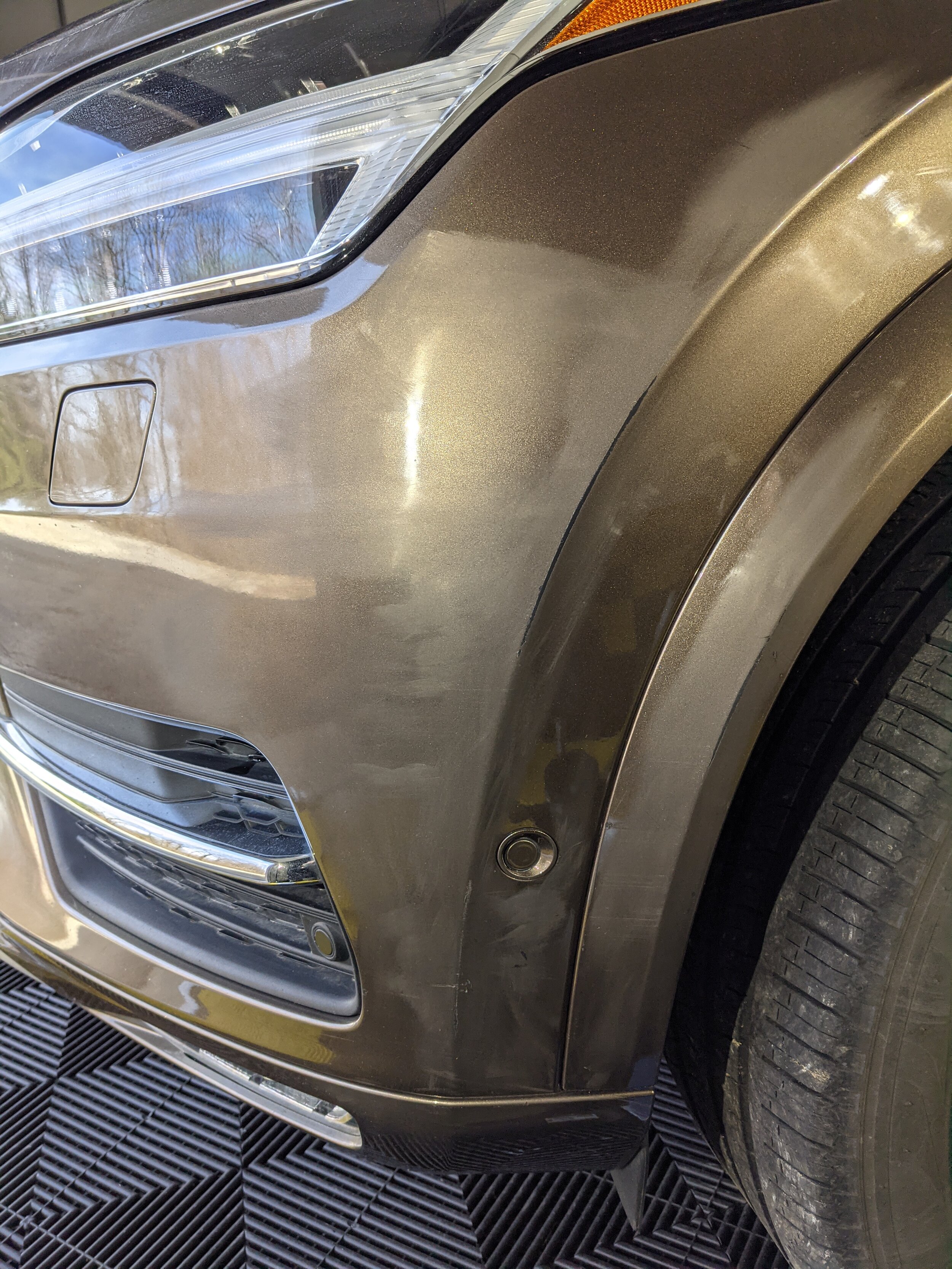

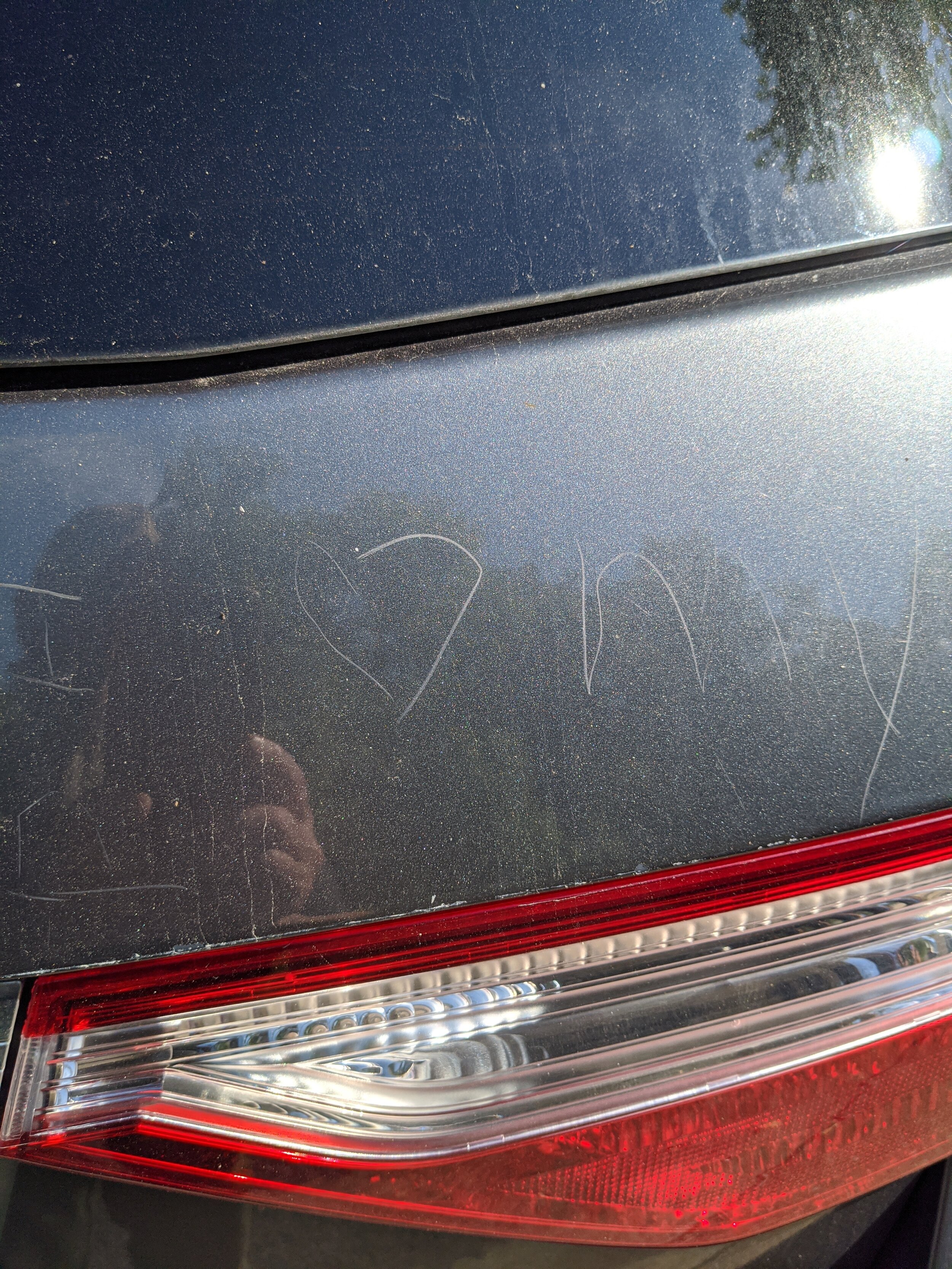
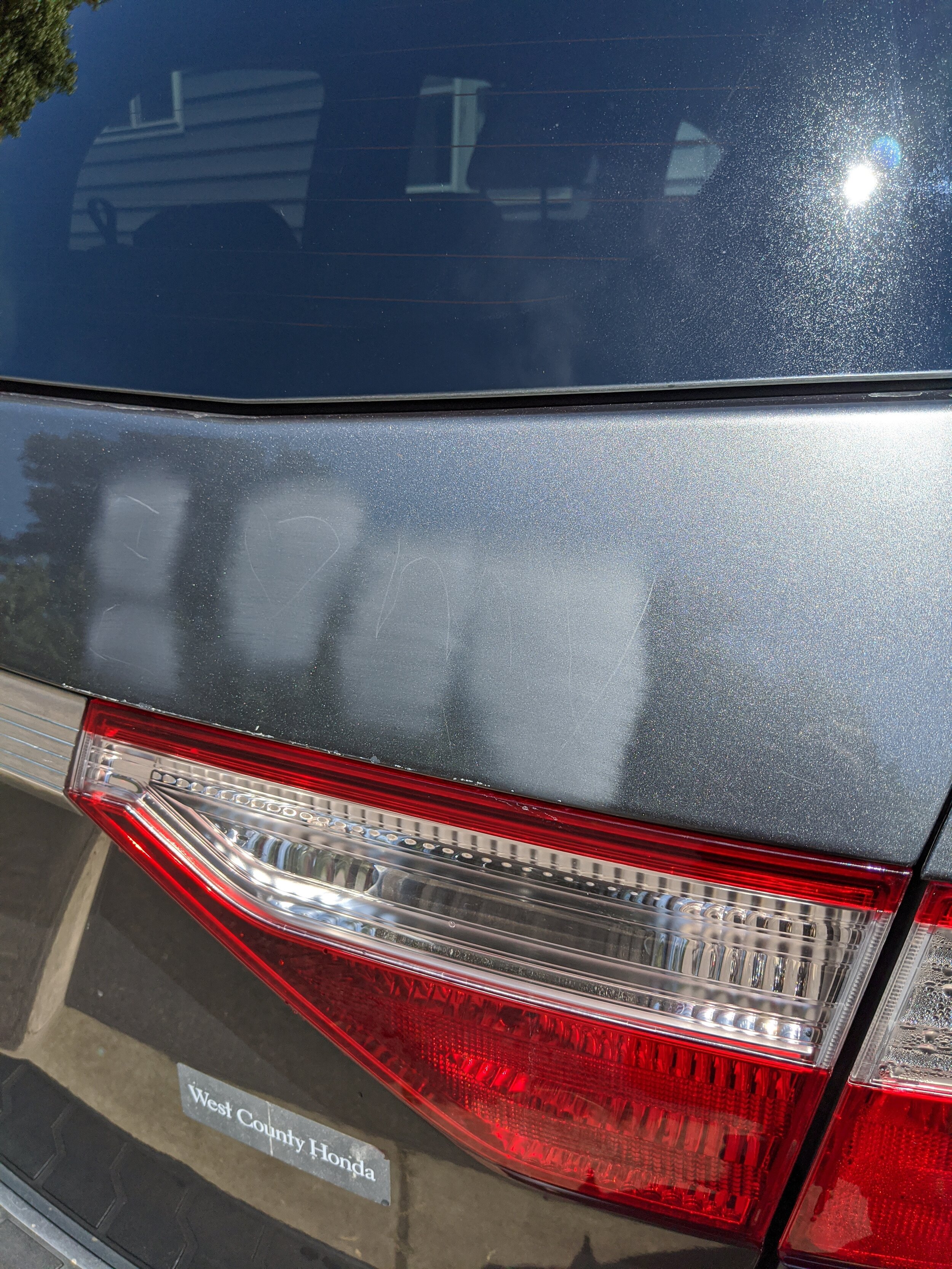

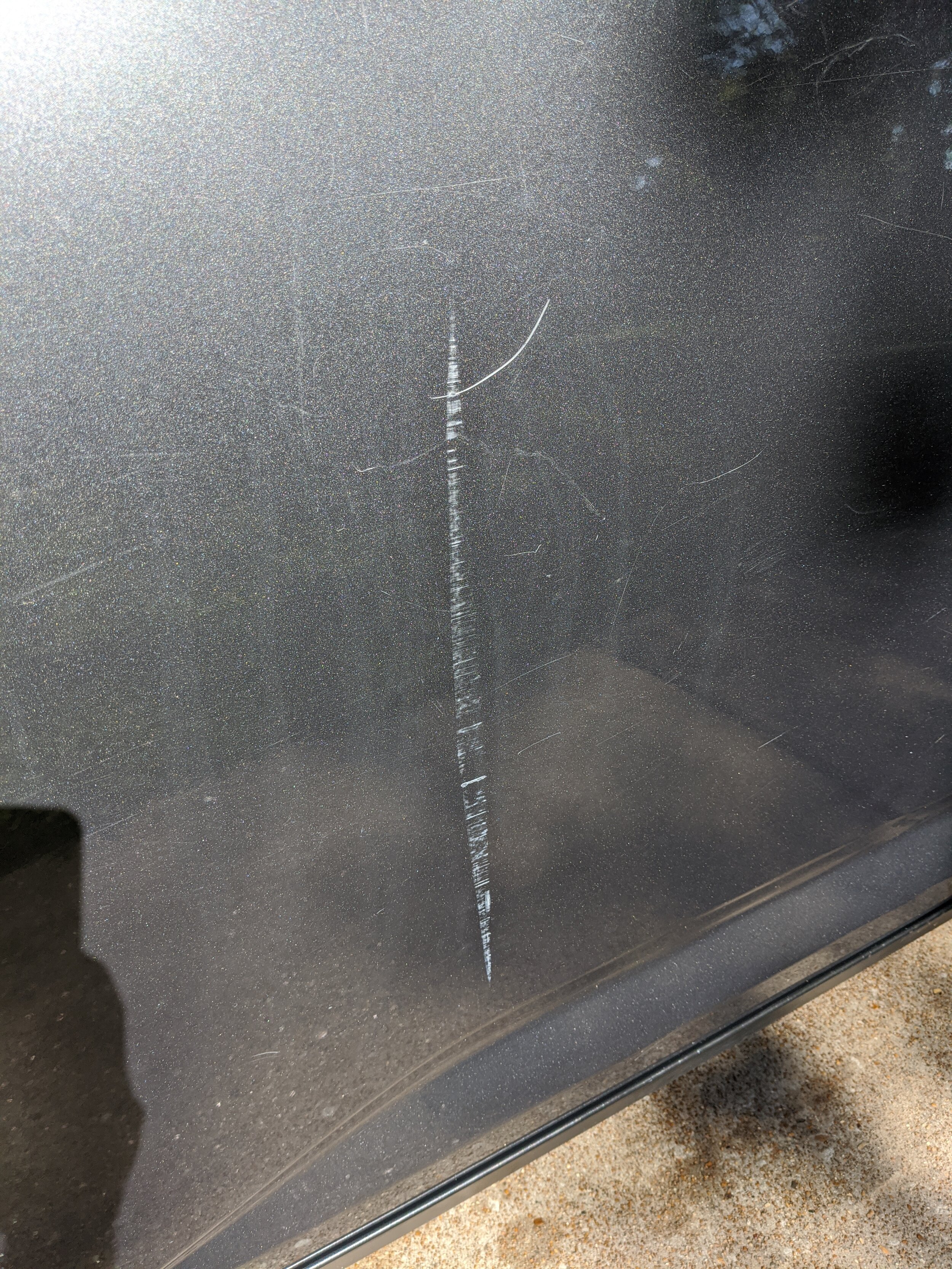
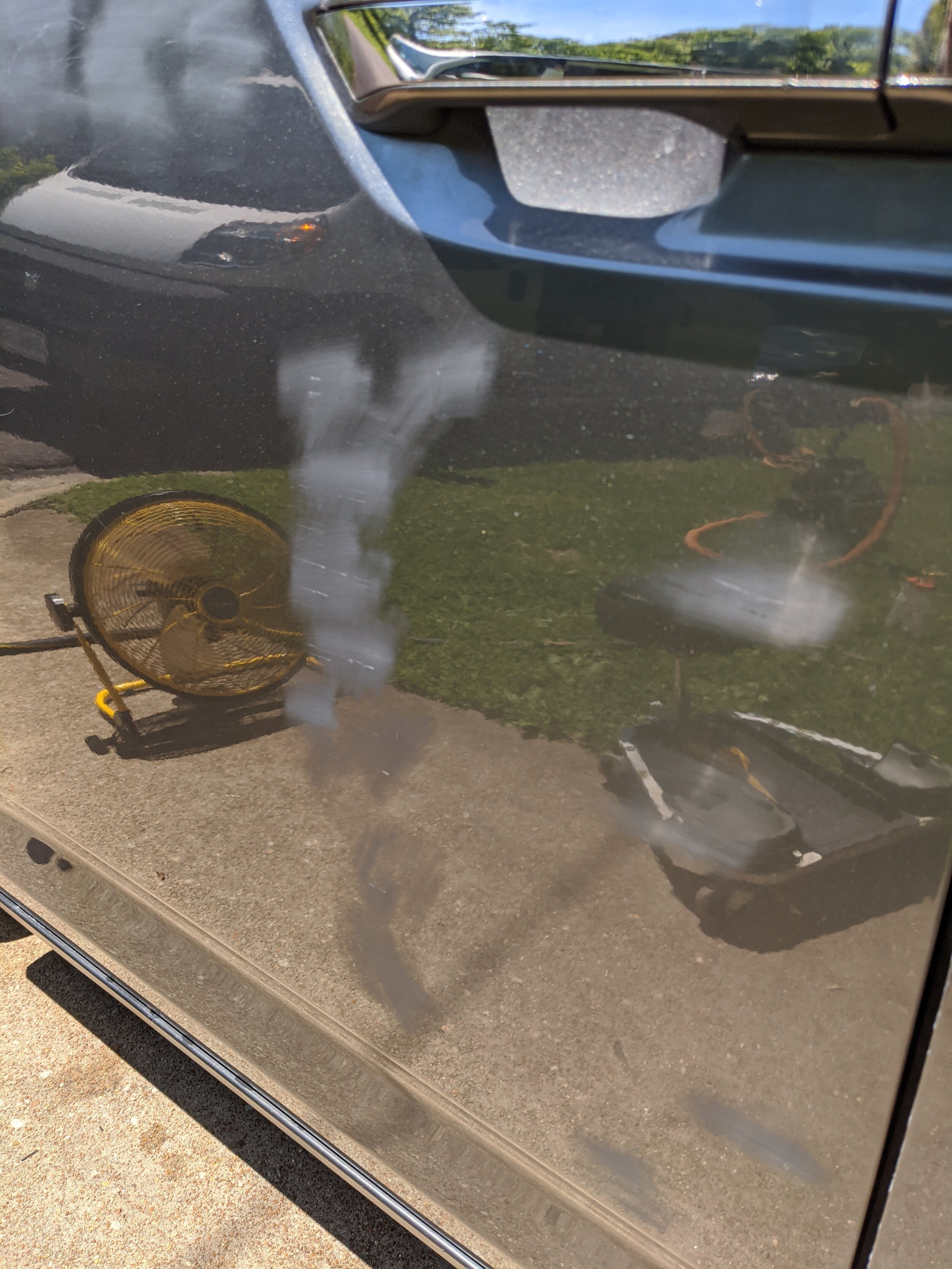
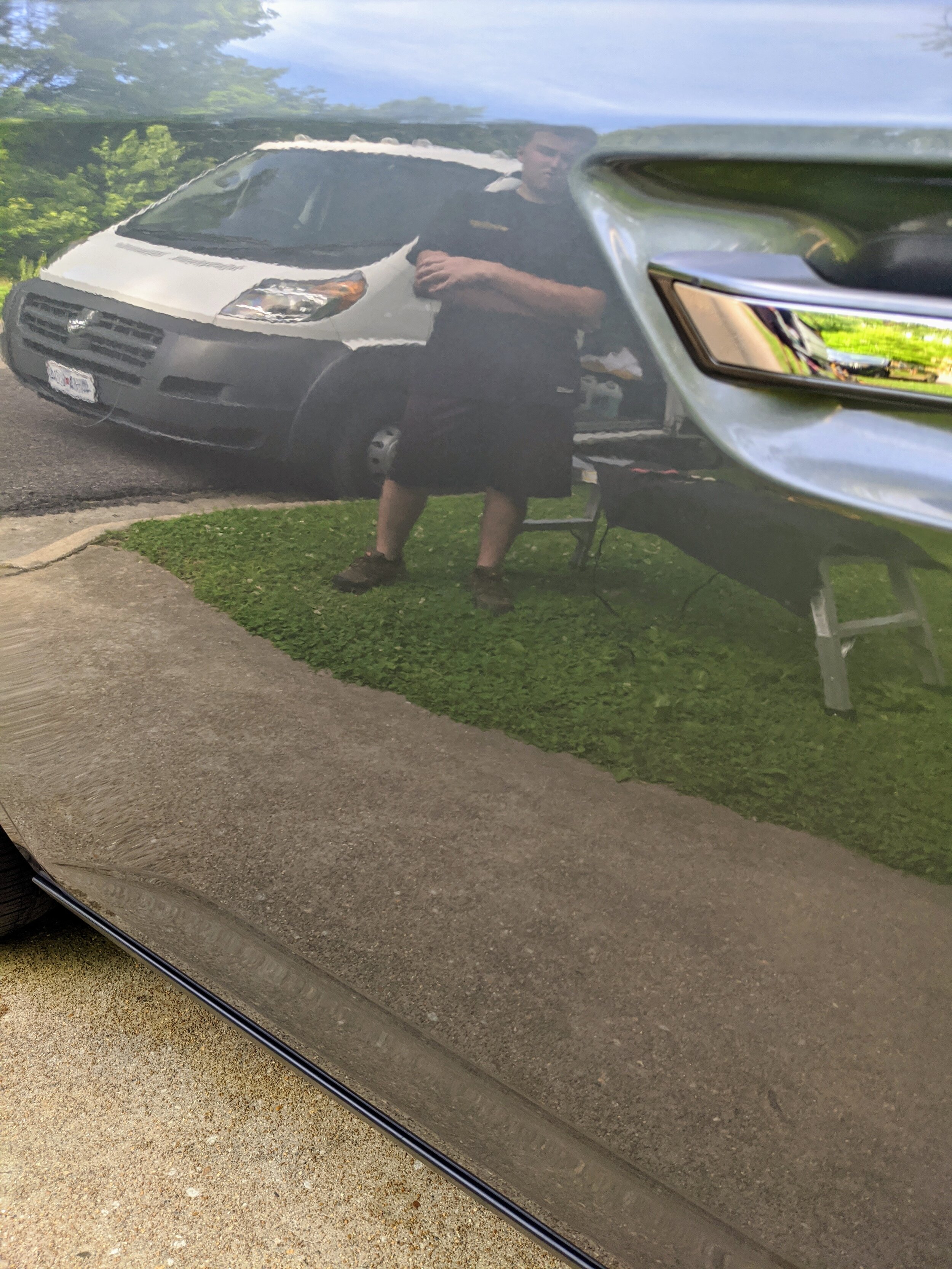
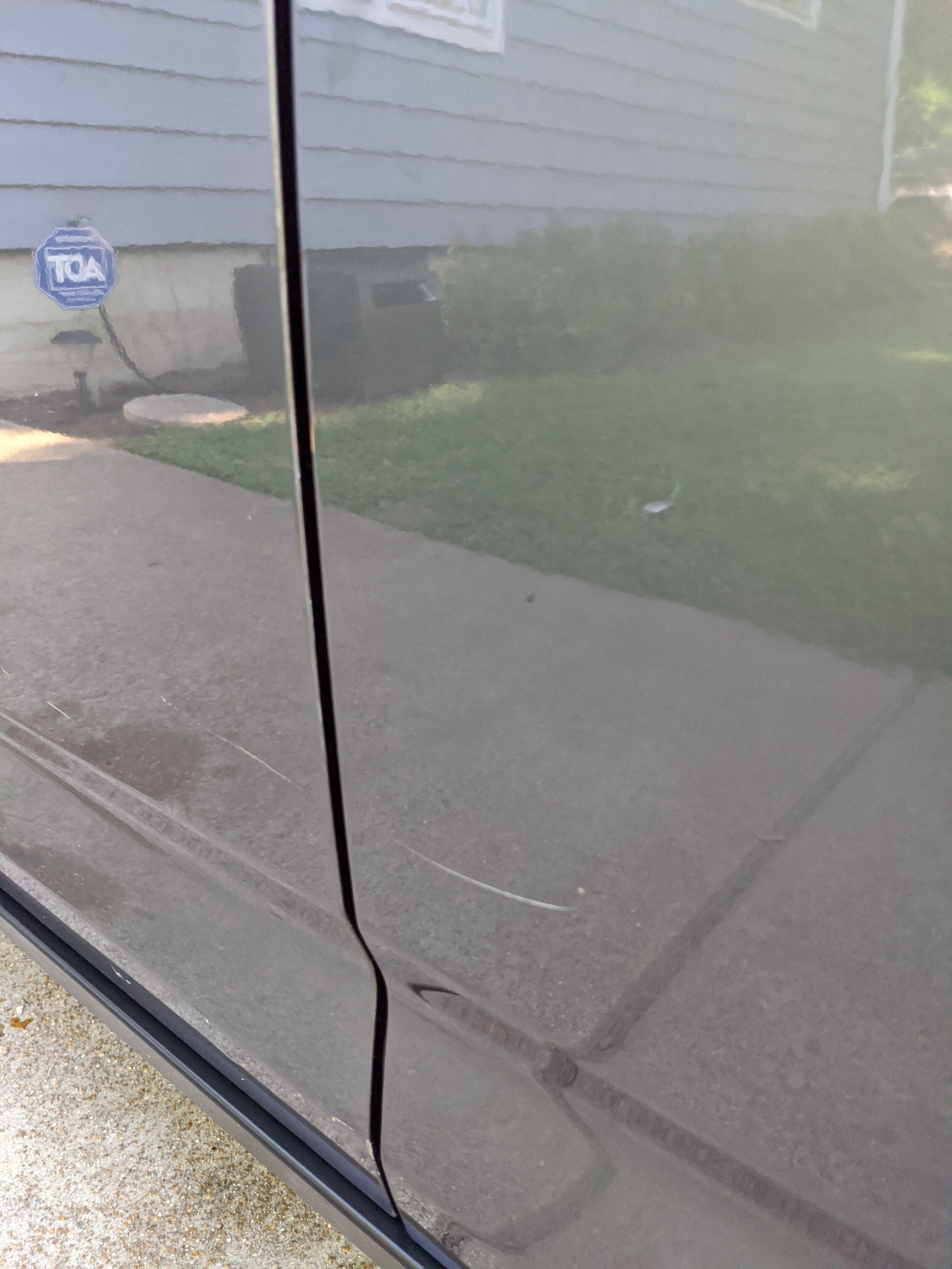
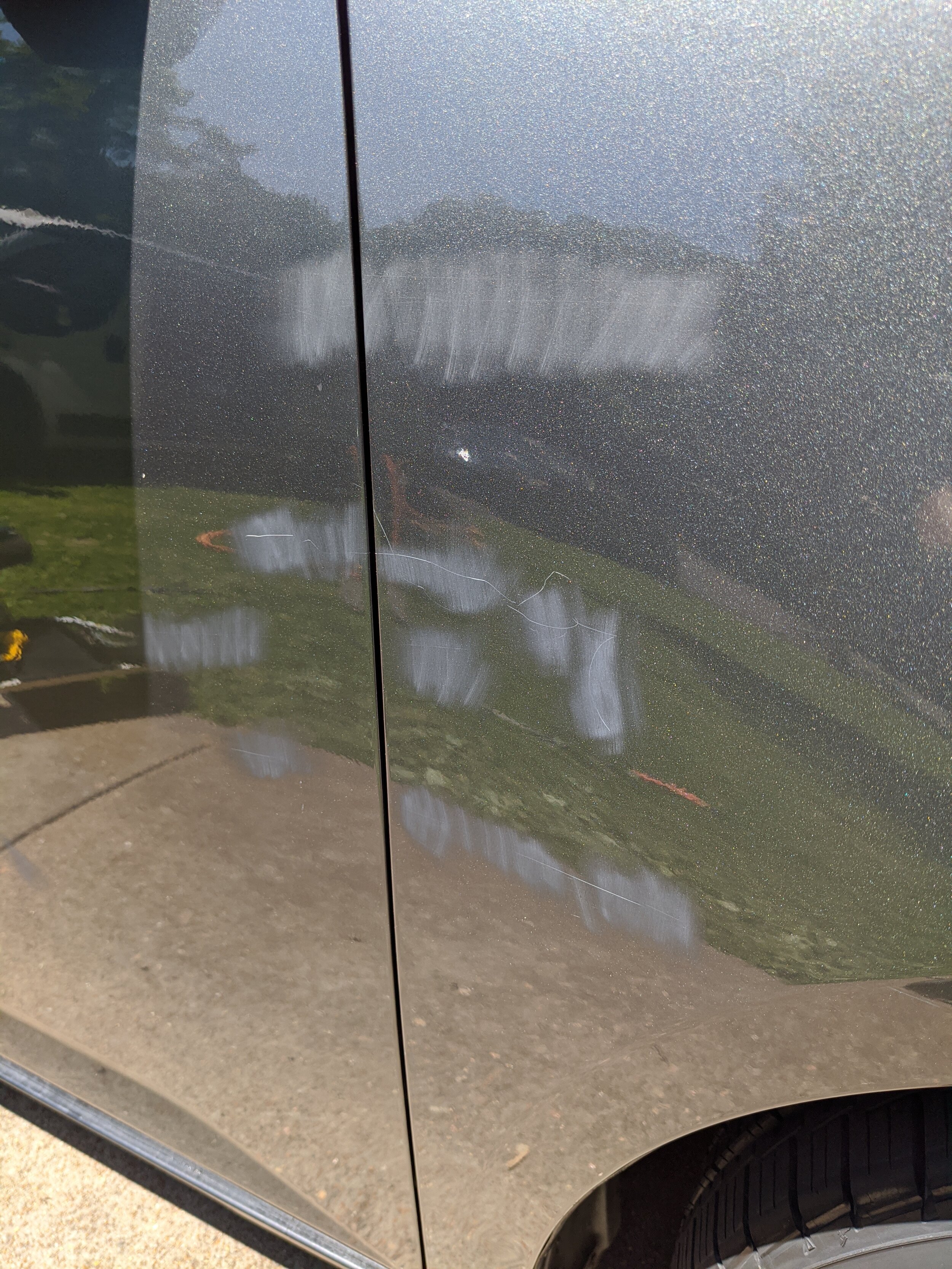


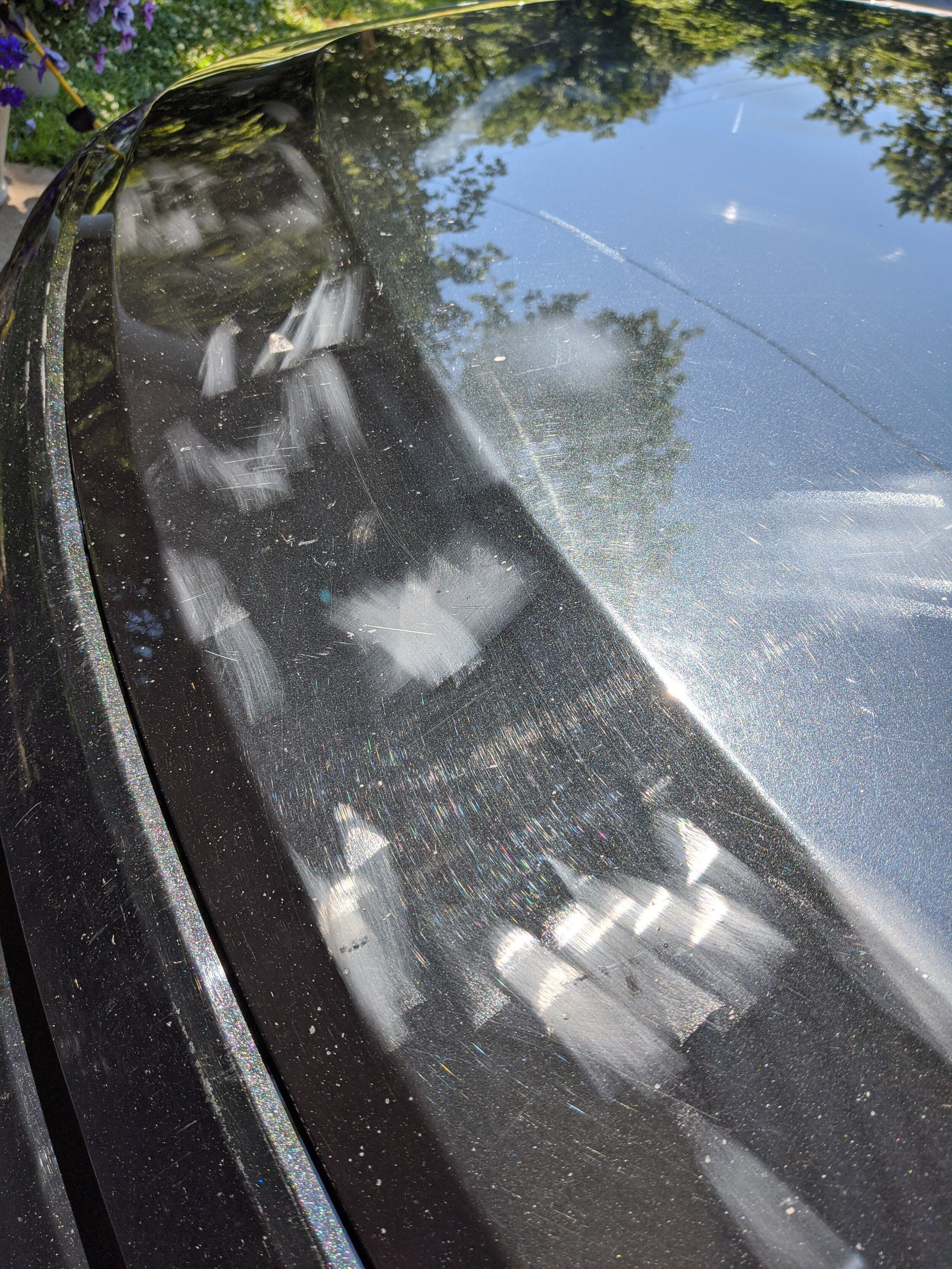
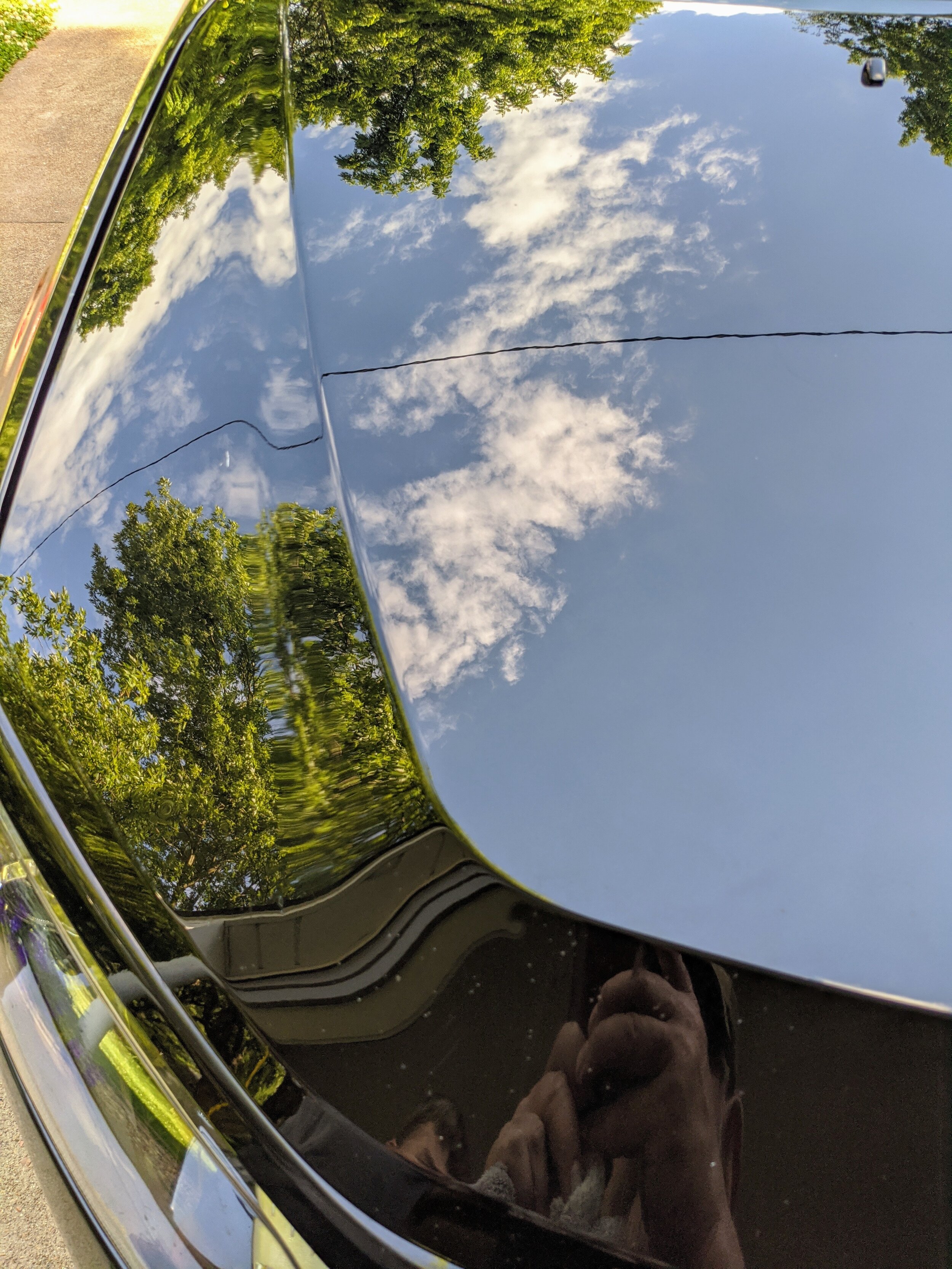
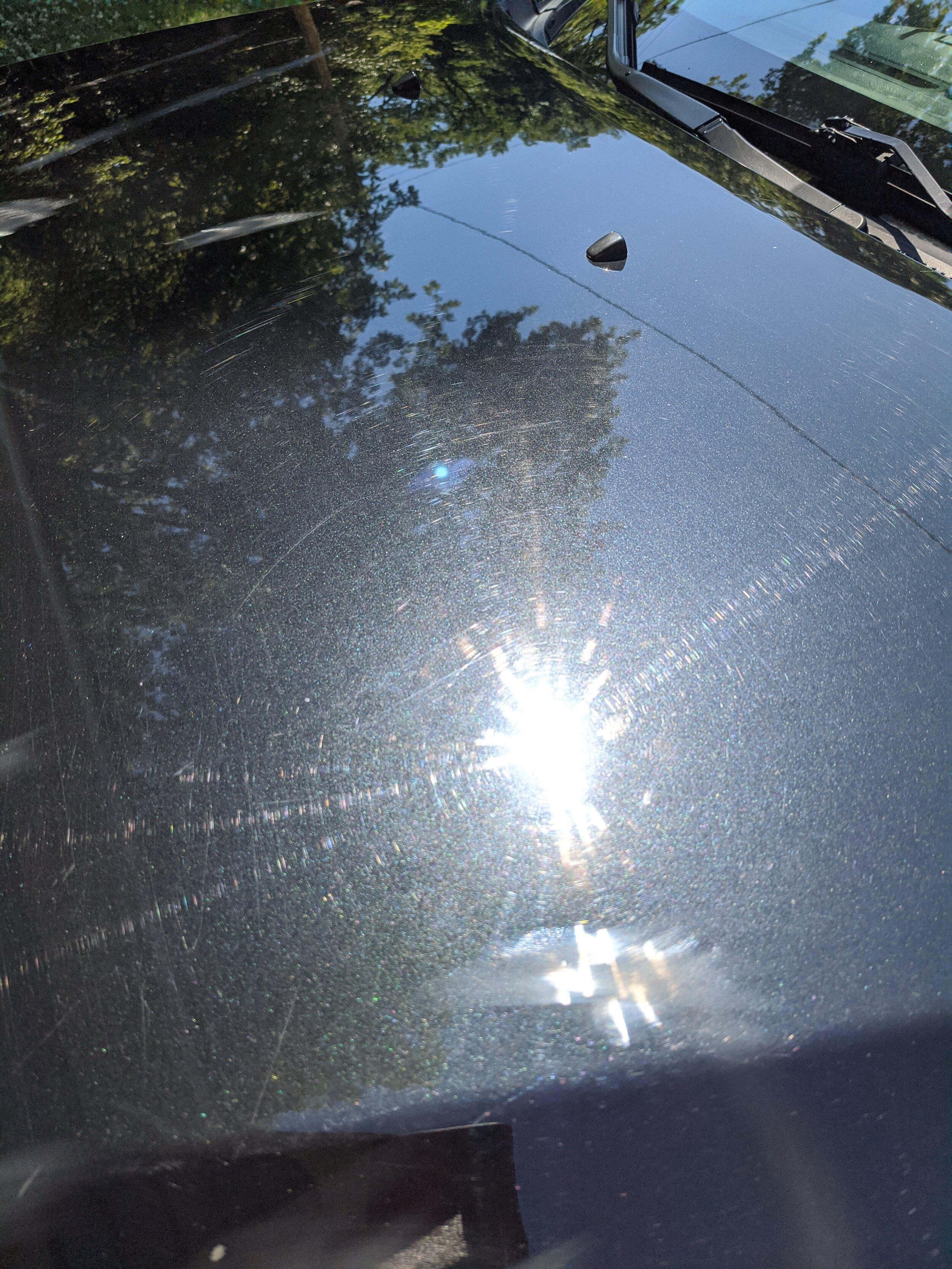
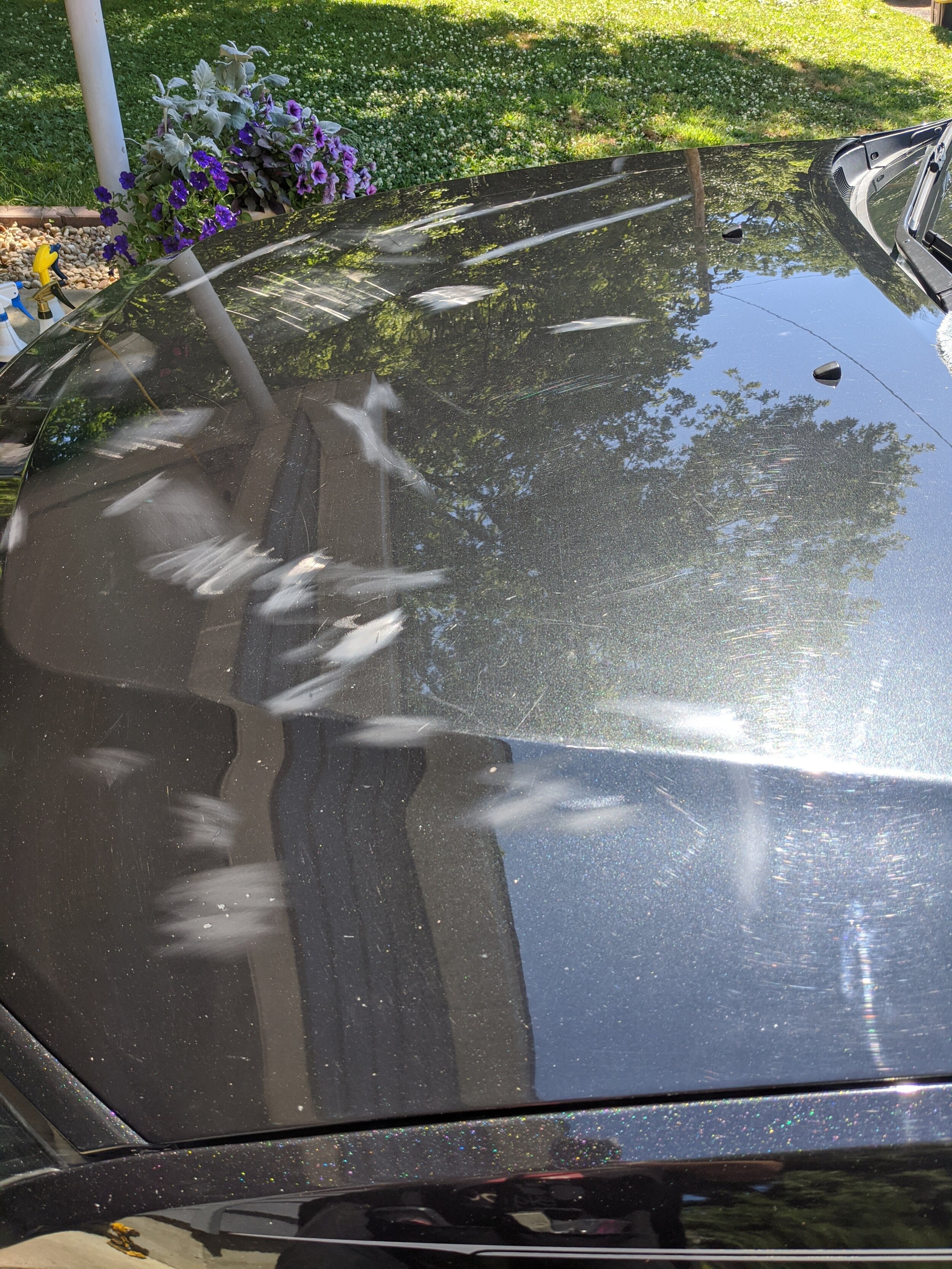
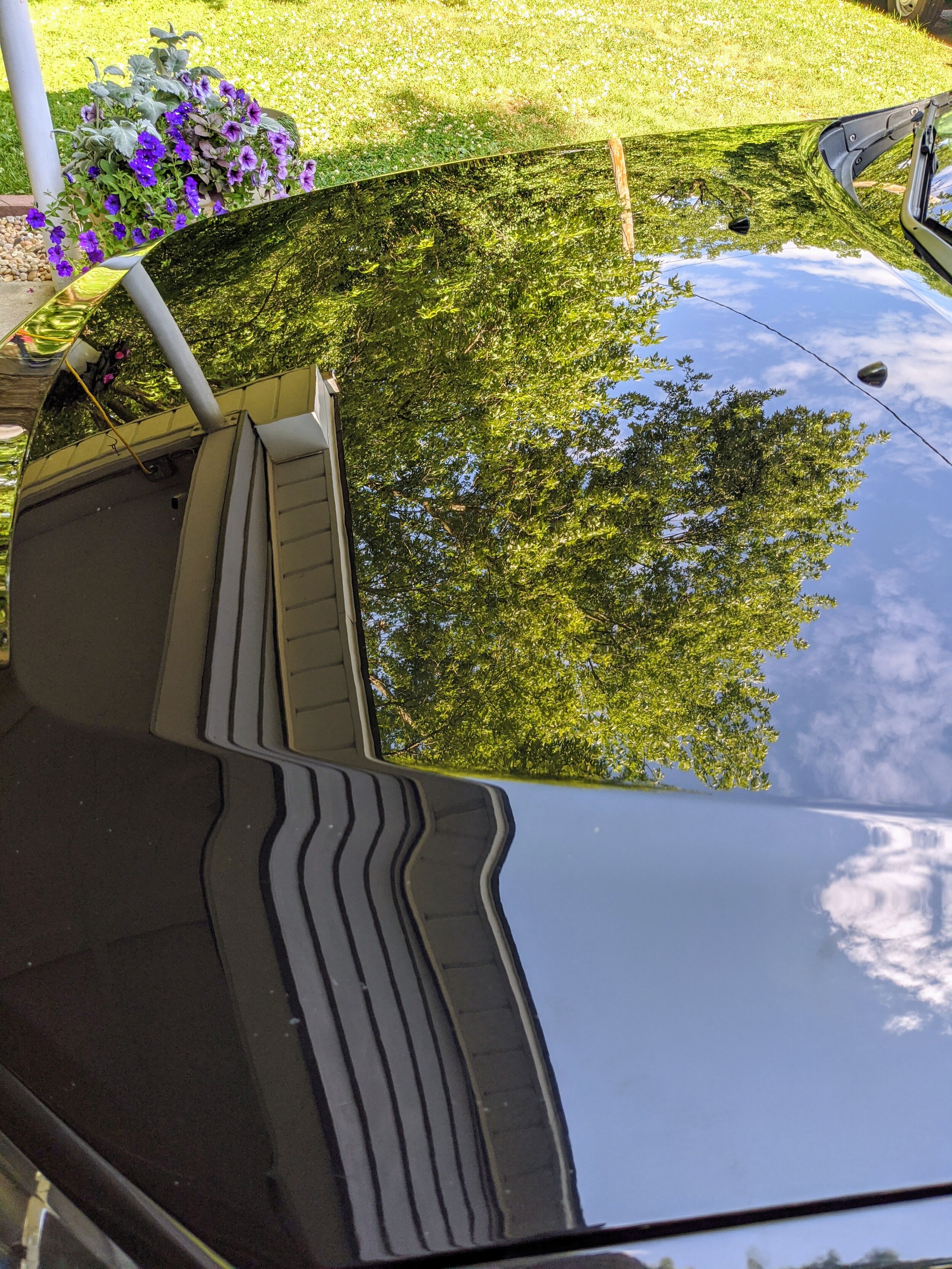
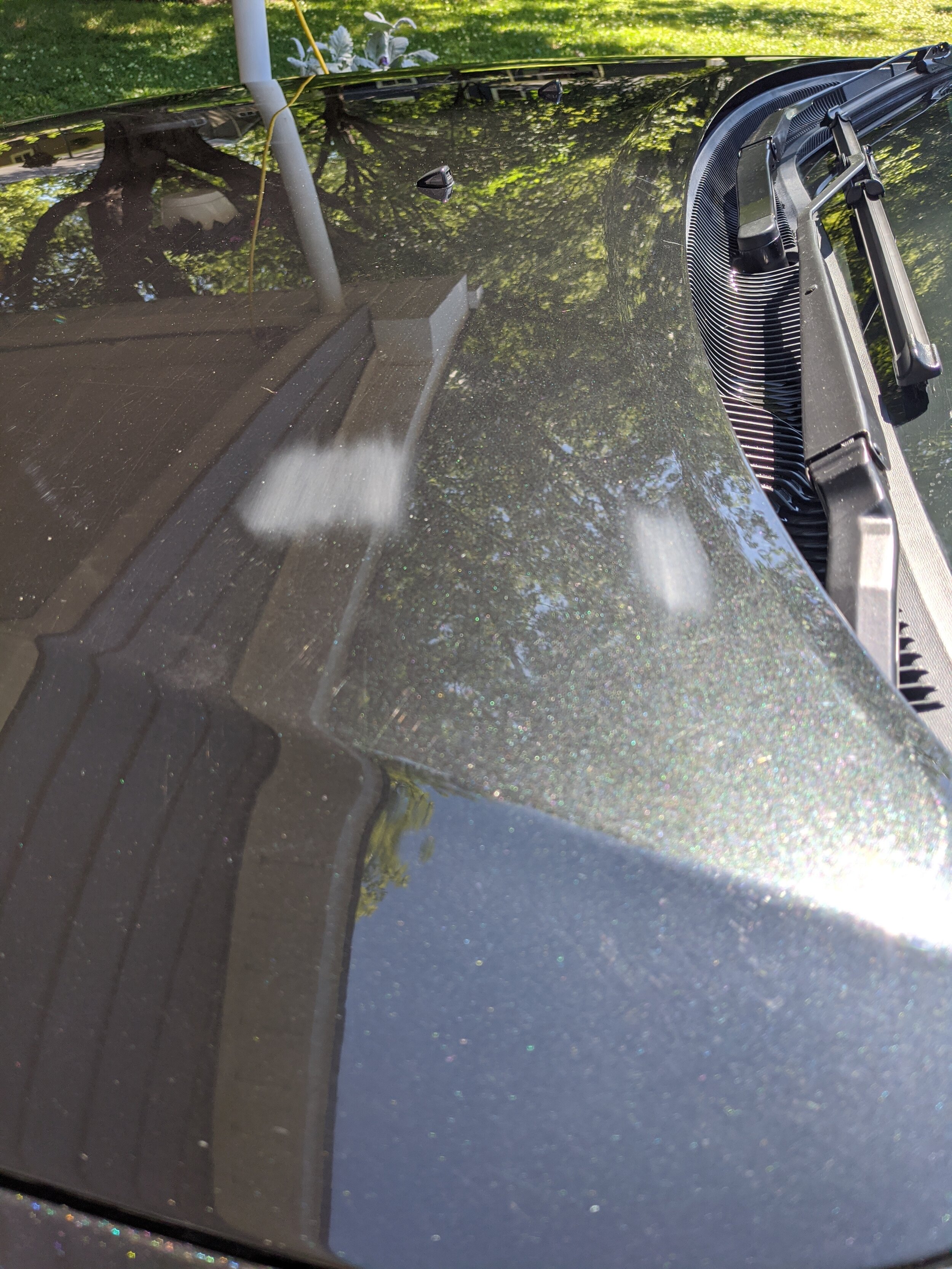

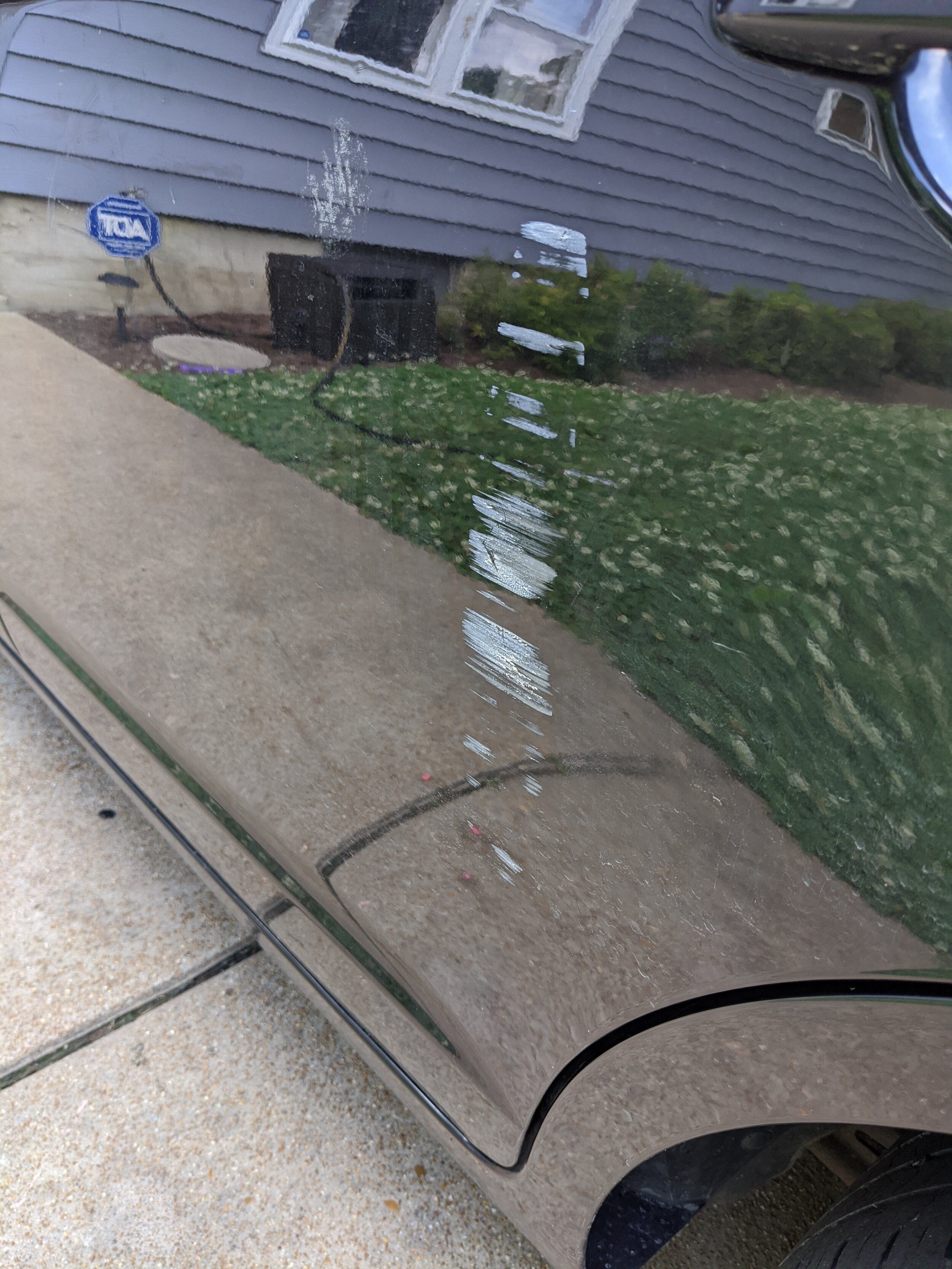
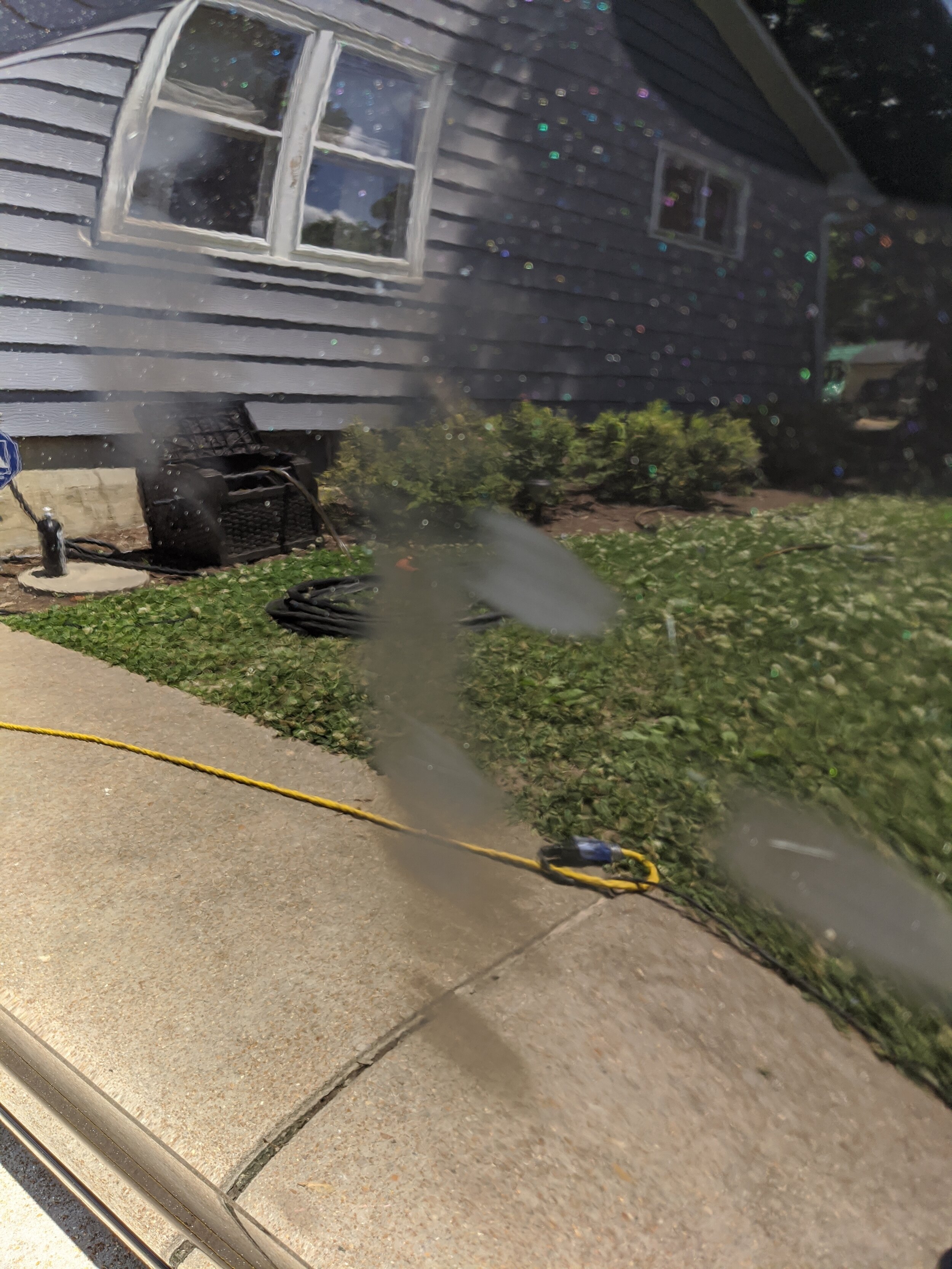
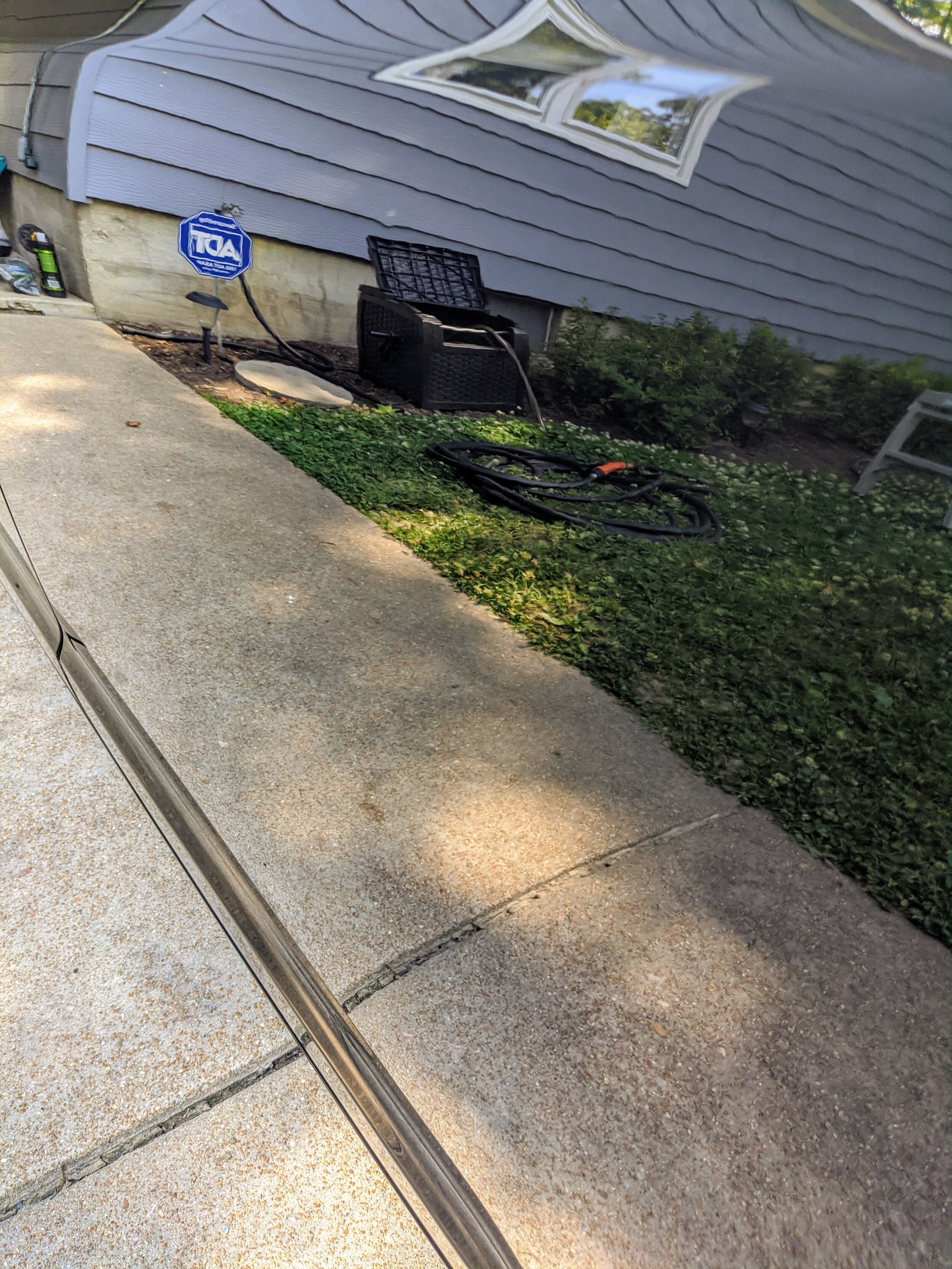
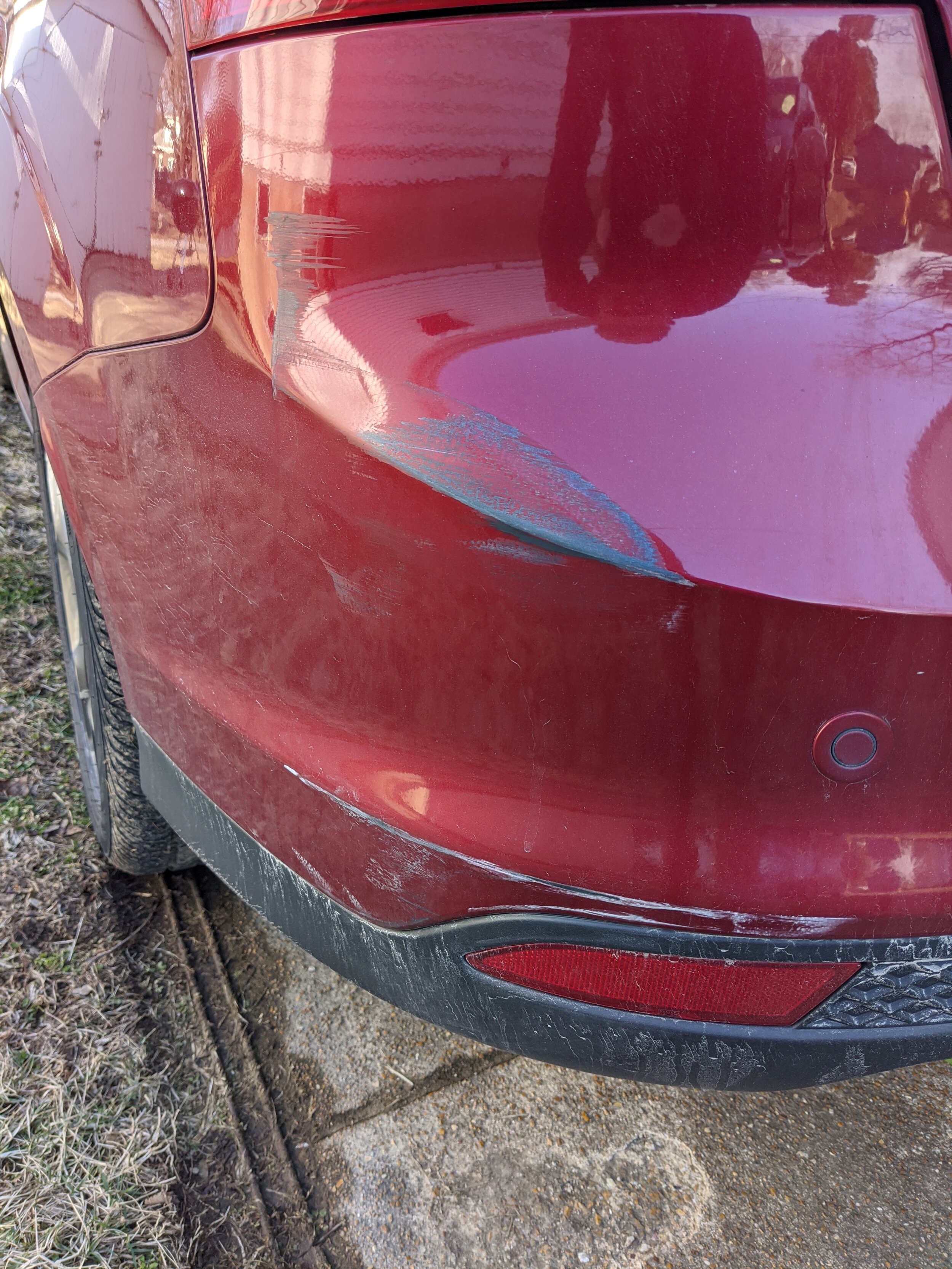
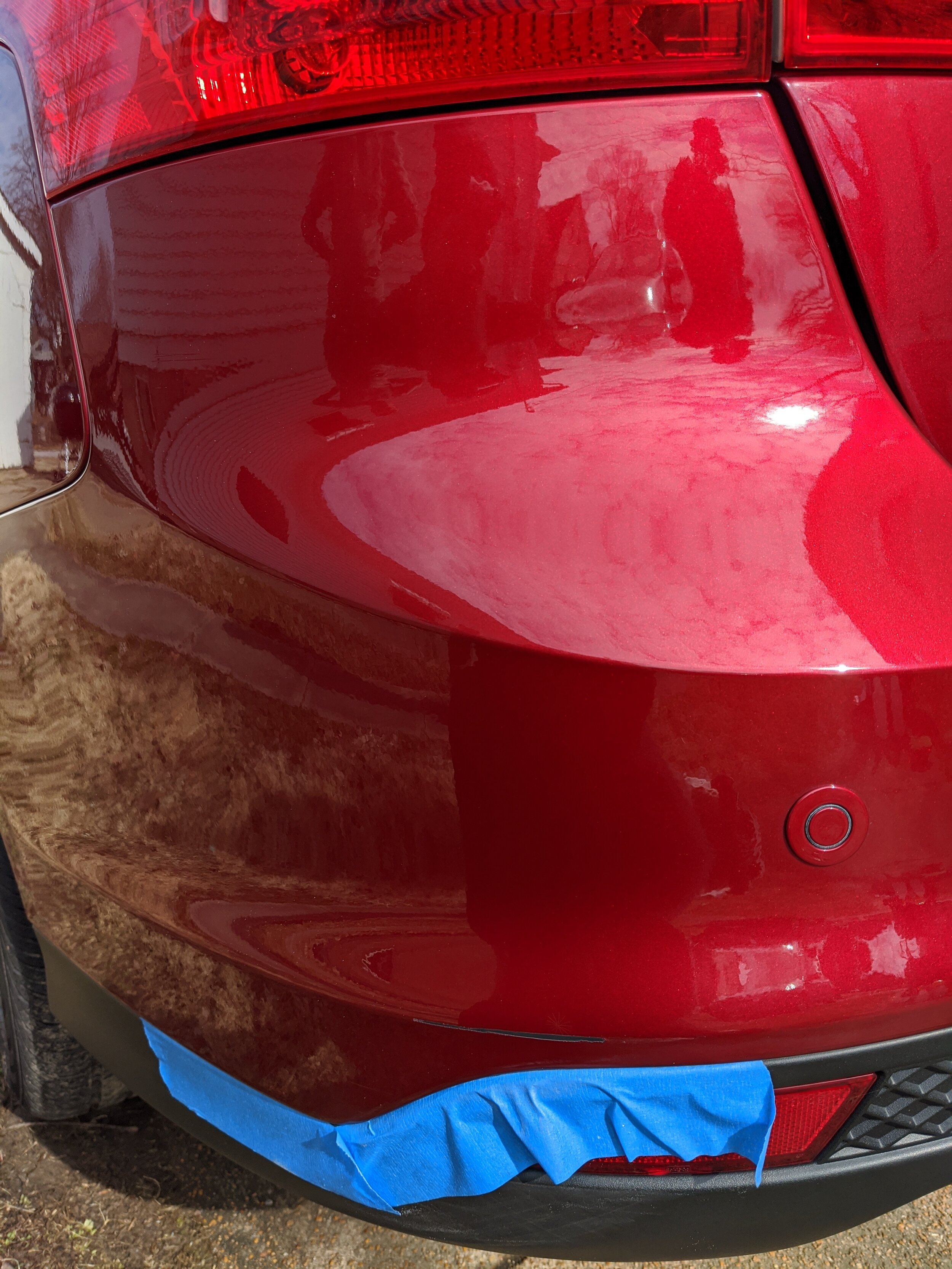
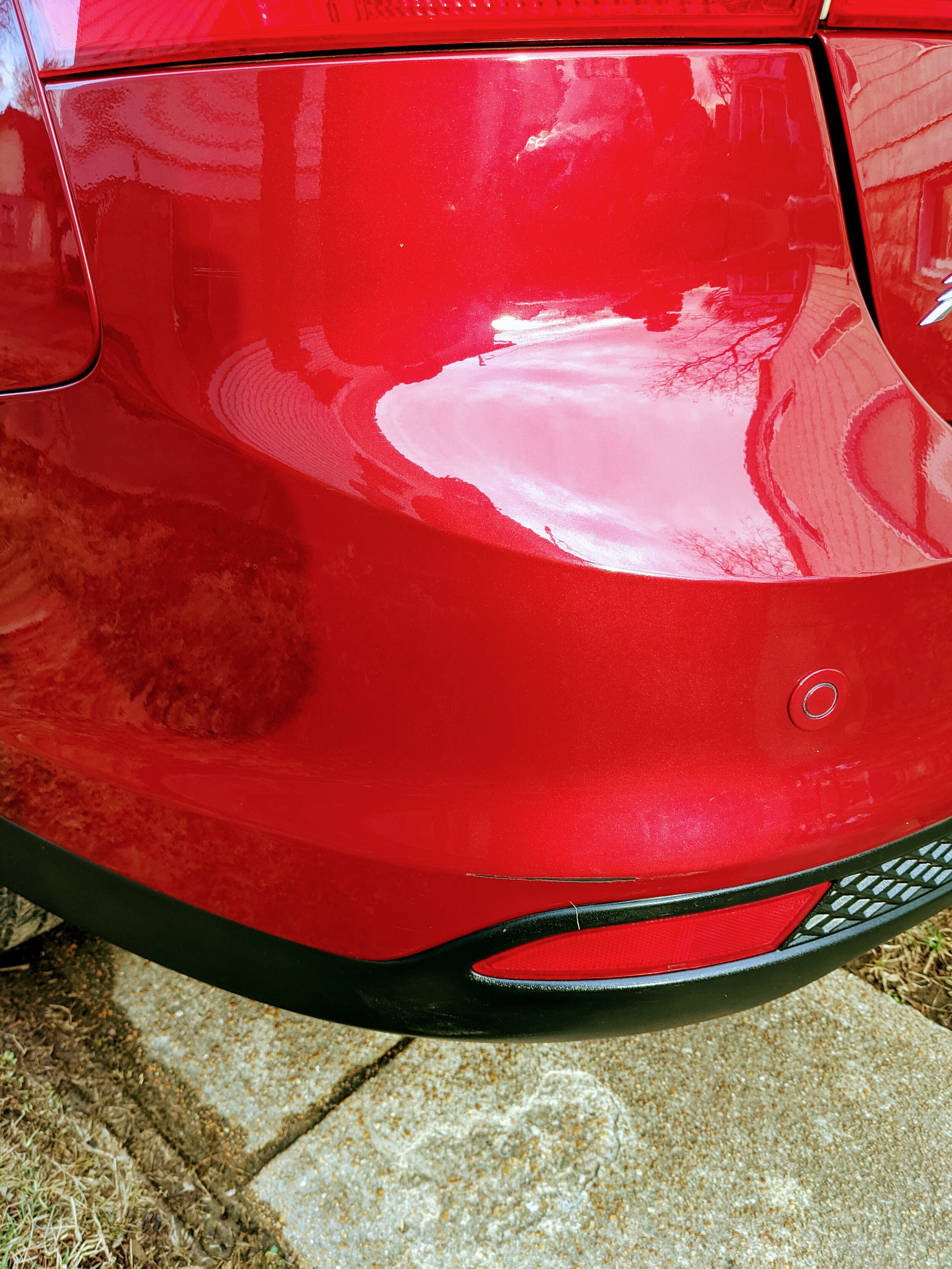
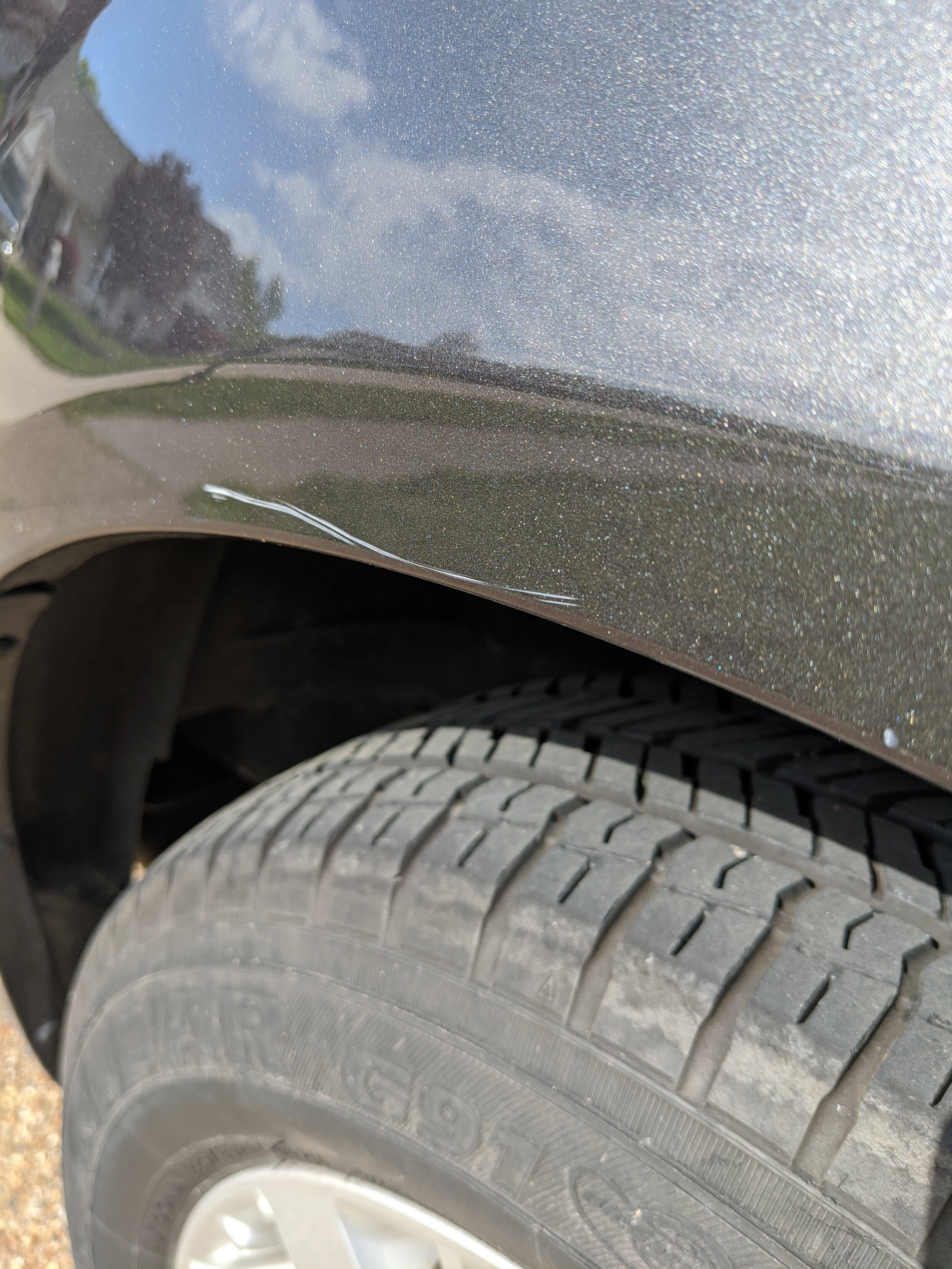
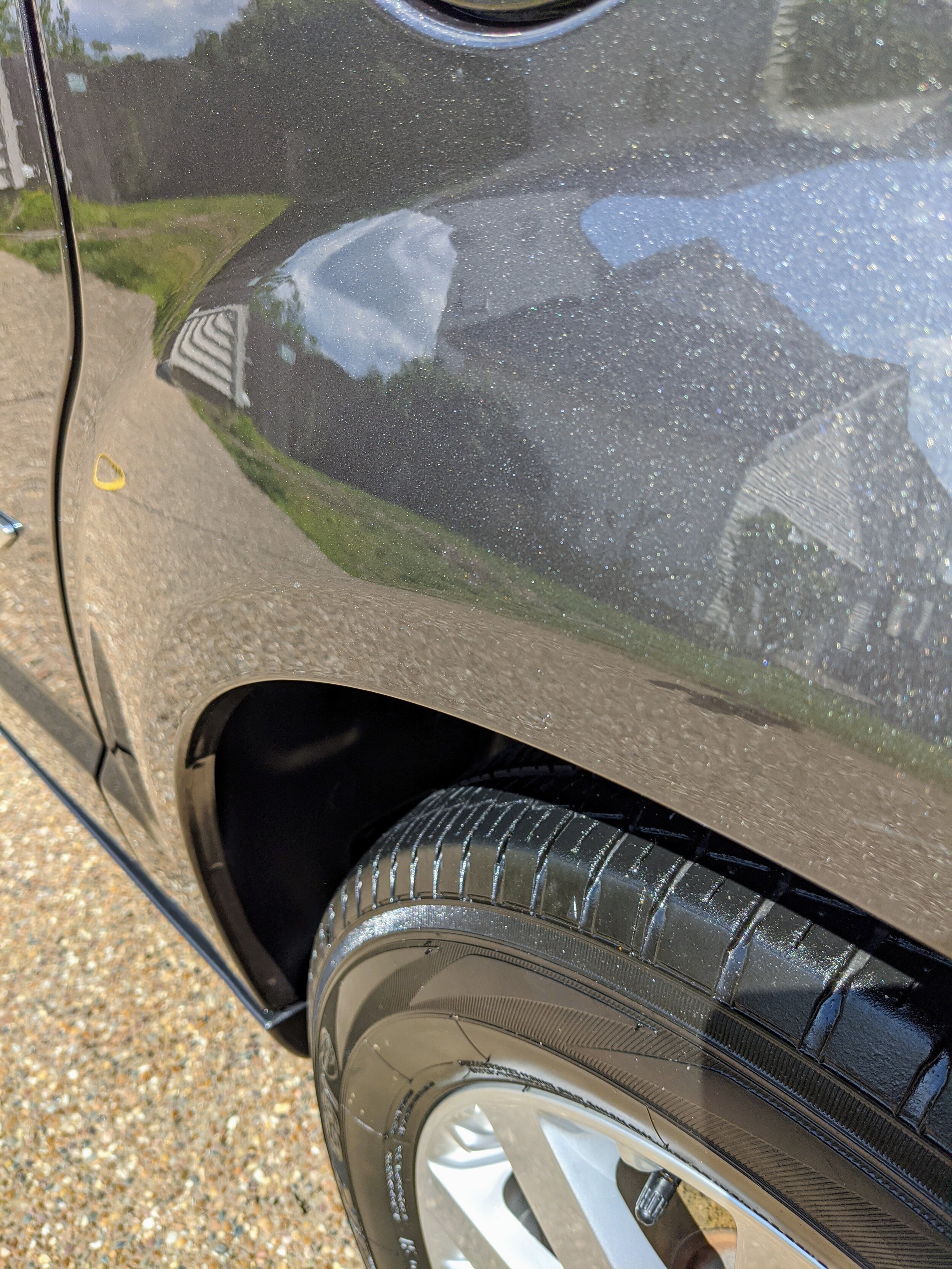
Wet Sand to Improve Not Necessarily Remove
Wet sanding, also called color sanding, is the process of sanding away a certain measure of the Vehicle Clear Coat in order to improve or fix severely defective paint, and/or random isolated deep scratches. After the sanding has been done, a heavy cutting polish is applied to bring back the gloss and shine. Then a wax, sealant, or ceramic coating is applied in order to protect and visually enhance the paint. It's called "wet sanding" because as the sanding process is happening, there must be some source of water or lubricant sprayed on the paint and sandpaper in order to wash away the sanded clear coat residue. This way, the sandpaper does not get clogged up with dirt and residue while the sanding is happening. Wet sanding paint is done with very high grade, fine sandpaper such as 1000, 2000, and 3000 grit. Here is a picture of a panel that has been wet sanded, but not polished:
The white residue is the sanded clear coat, underneath that is a matte finish because the polish has not yet been applied to bring back that glossy finish. Here is an example of some deep scratches that have been corrected through wet sanding and polishing:
Wet sanding is the most aggressive form of paint correction. In wet sanding vehicle paint, it's extremely important to understand that you are sanding away a considerable amount of the Clear Coat. That does not mean that you have to sand a lot away, but when compared to polishing, wet sanding is much, much more aggressive. Essentially wet sanding is the leveling of the paint, and polishing is the restoration of the gloss finish. A car that has been wet sanded and polished will absolutely look incredible, but there are trade-offs.
Wet sanding is an area where many "professional" detailers will not have the integrity to give you all the information you need in order to make the wisest decision, so let us help. Since a clear coat is the vehicle's protection against UV rays from the sun, removing a certain level of the protection will make your vehicle paint (over time) more susceptible to fading, discoloration, etc. Now, don't freak out and refuse to wet sand any part of your car, wet sanding can be a very good thing, and with the right detailer doing it you don't have to worry. For example, when our clients ask us to remove a scratch from their car we might say something like this: "Since this scratch is through the clear coat we are going to have to wet sand it, then polish. We cannot promise that we will be able to completely remove the scratch because we are only going to wet sand to a certain degree. We wet sand to Improve not Necessarily Remove. That way we don't remove an unreasonable amount of clear coat. We can promise you that the scratch will be improved, and it may very well be close to perfect when we’re done, but there is no way to know for sure until we start sanding. We don’t want to sand too much, so as to keep a good amount of clear coat on this specific area to make sure that it stays protected over time." In our opinion, a mark of a great detailer is one who will have these kinds of conversations with their customers to build trust, and make sure they know what they're getting into (to understand more about car clear coat visit the "Vehicle Clear Coat" page).


